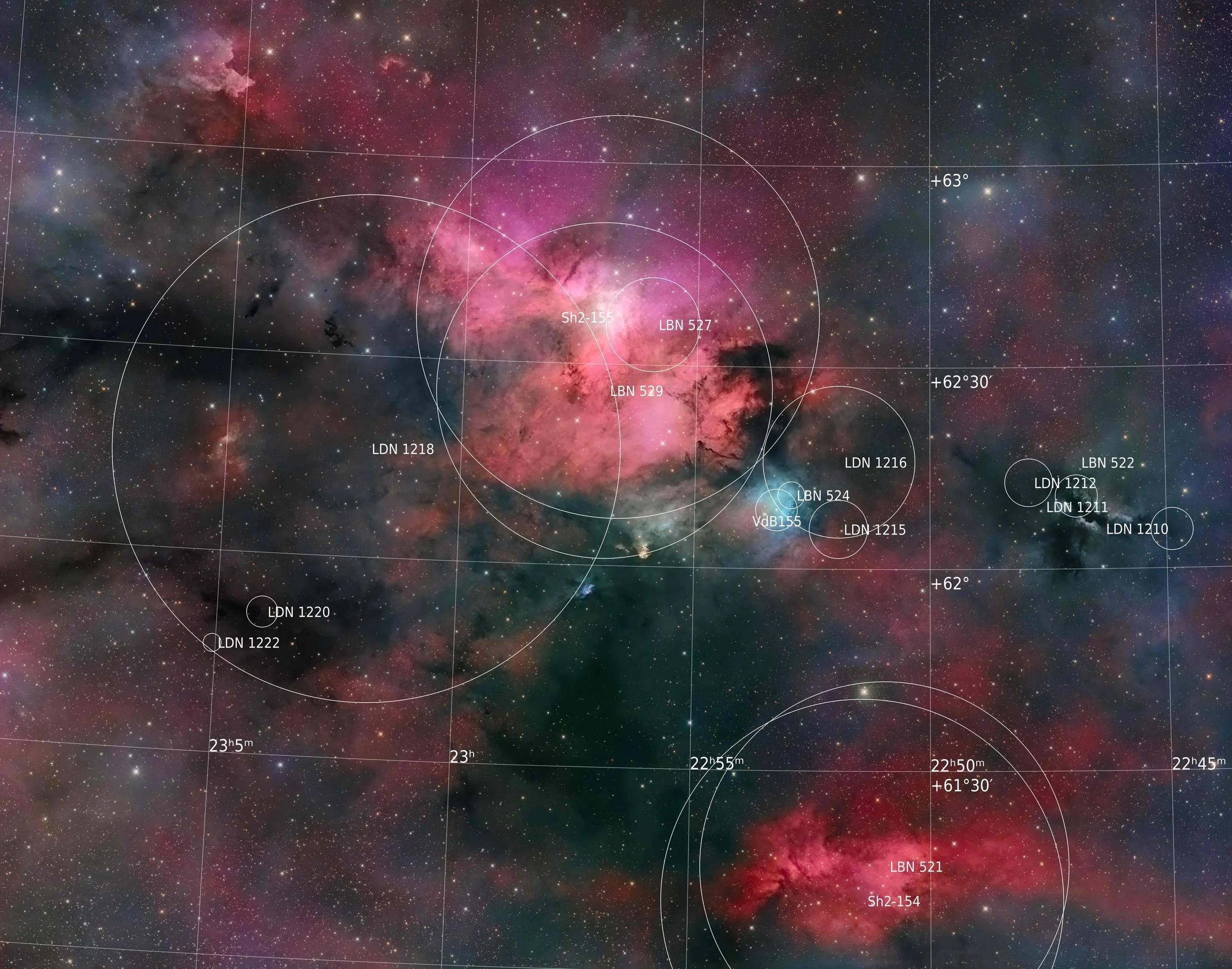The Cave Nebula – A Window into Cosmic Time
Nestled in the constellation Cepheus, the Cave Nebula (Sh2-155) is a rich and complex region of ionized gas, reflection nebulae, and dark dust lanes—an interplay of stellar birth and shadow that evokes both mystery and wonder. Like a cosmic cavern glowing from within, it owes its name to the dark obscuring lane that cuts into the bright emission region, resembling the mouth of a cave.
This image captures the Cave Nebula in glowing hydrogen light excited by the energetic radiation of nearby young stars, soft blue starlight scattered by interstellar dust, and the inky filaments of dark nebulae that weave between them.
The light recorded here began its journey to Earth nearly 2,400 years ago—around 2,400 light-years from our solar system. At the time this light departed its birthplace:
In China, the Warring States period was in full swing, with great philosophers like Confucius and Mencius laying the foundation for millennia of Eastern thought.
In India, the Mahajanapadas flourished, and the Second Urbanization was shaping early Indian society, while Jainism and Buddhism continued to spread across the subcontinent.
In Japan, early Yayoi culture was beginning to develop agricultural societies that would transform the archipelago.
In the West, the Classical Greek era was at its peak—Plato and Aristotle were reshaping philosophy, and the Parthenon had recently been completed in Athens.
The Cave Nebula is not just a striking deep sky object—it is a visual reminder of our place in the cosmos and the scale of time itself. The ancient light that formed this image has traveled across vast gulfs of space, through eons of human history, before landing on a sensor beneath a dark sky in our own time.
Annotated Cave Nebula – A Detailed Map of Stellar Birth and Ancient Light
This annotated image of the Cave Nebula (Sharpless 2-155), located in the constellation Cepheus, unveils one of the most visually dynamic and scientifically rich regions in our galactic neighborhood. With a stunning combination of emission, reflection, and dark nebulae, this area showcases the drama of star formation set against the backdrop of deep time.
Here, light from massive young stars ionizes the surrounding gas, igniting it in vivid red hues, while thick curtains of dust both reflect starlight and obscure it—creating the cave-like structure for which Sh2-155 is named. Yet this image reveals much more than just the Cave itself.
Each label marks a distinct region cataloged by astronomers over the last century:
LDN 1222, 1228, 1216, 1215, 1212, 1211, 1210 – Opaque dark nebulae cataloged by Beverly Lynds in 1962, these cold clouds harbor the potential for new stars.
LBN 527, 529, 524, 522, 521 – Faint reflection and emission regions cataloged by Lynds’ complementary catalog of bright nebulae.
Sharpless 2-155 – The primary emission nebula, glowing with ionized hydrogen excited by young stellar radiation.
Sharpless 2-154 – A fainter nearby HII region, adding further texture to the field.
VdB 155 – A subtle blue reflection nebula listed in Sidney van den Bergh’s 1966 catalog, where starlight is scattered by dust grains in interstellar space.
All of these structures sit within a molecular cloud complex located roughly 2,400 light-years from Earth.
This annotated presentation allows viewers to explore the region not just as an aesthetic composition, but as a guided tour through a stellar nursery—a place where the raw ingredients of future suns and worlds are actively taking shape.

